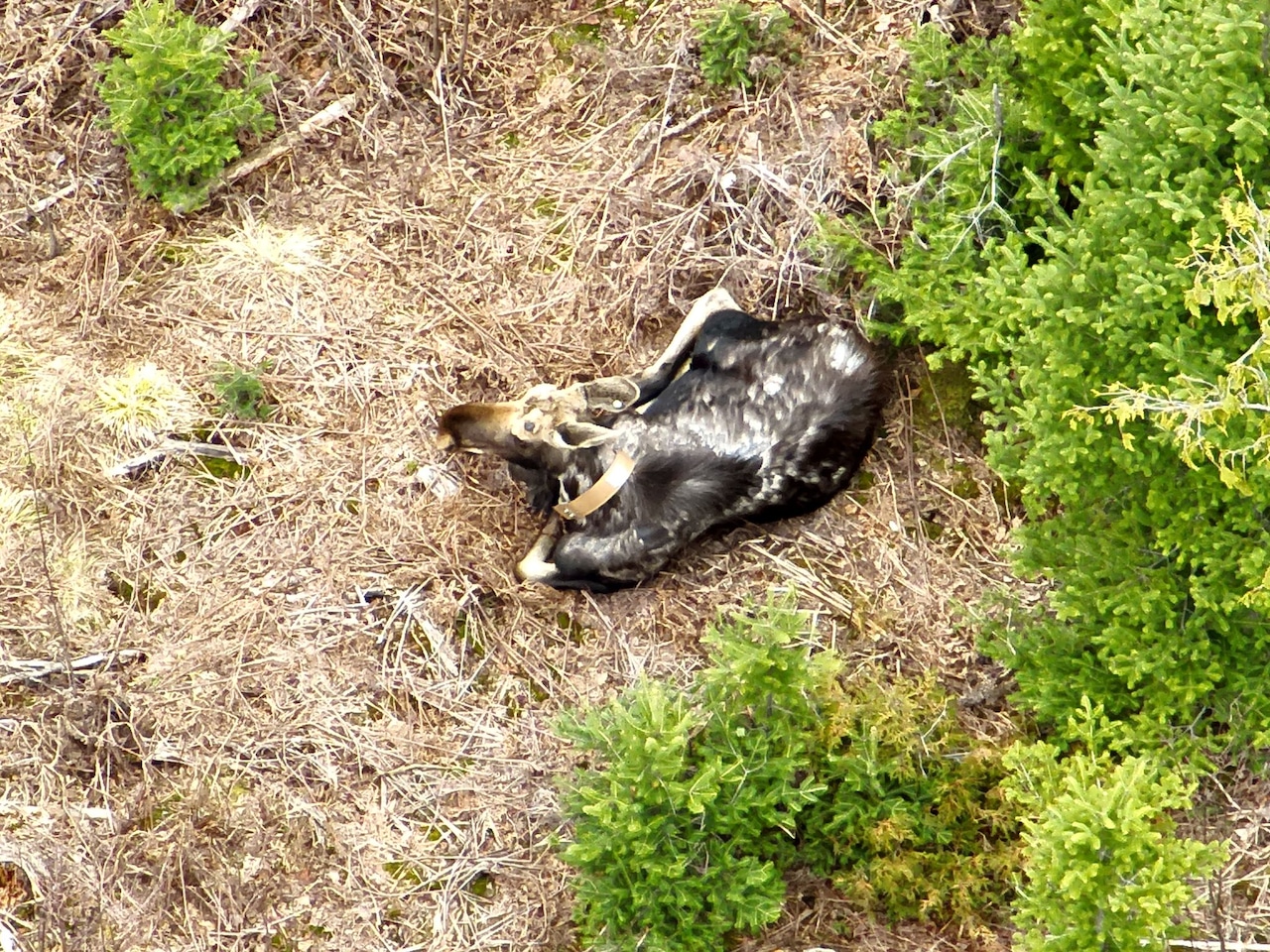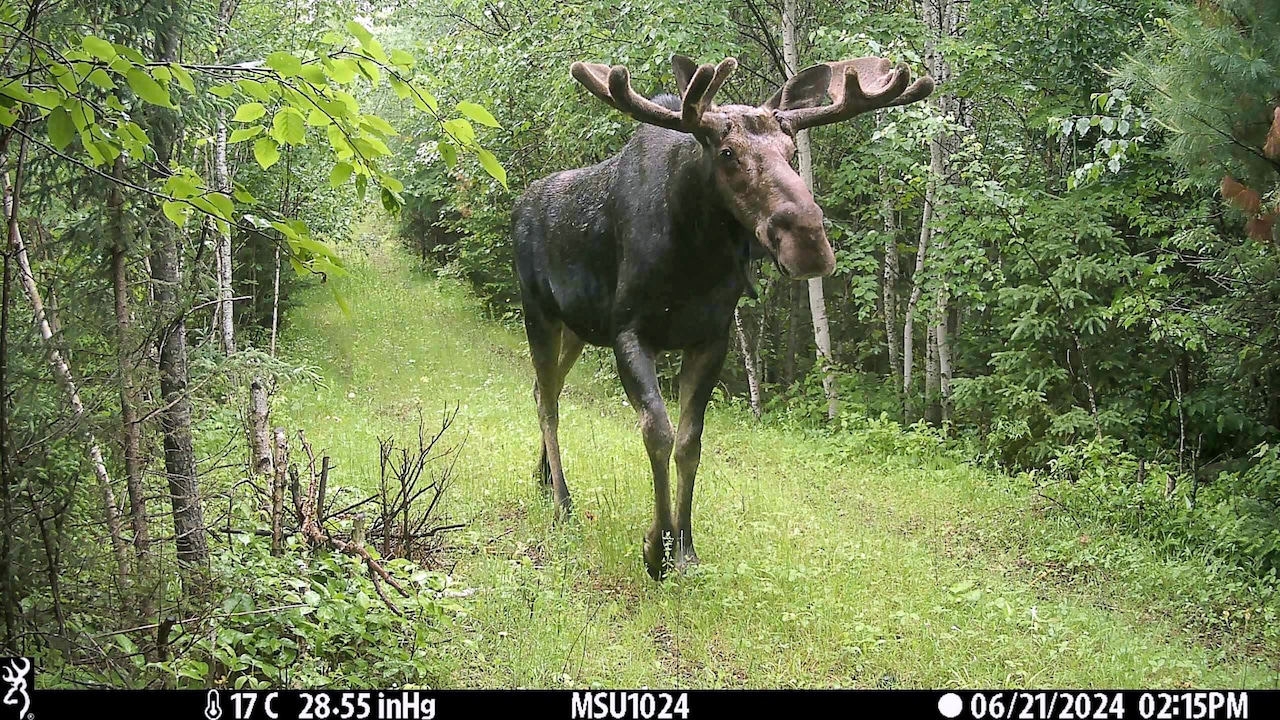MICHIGAMME HIGHLANDS, MI – Recent aerial surveys show Michigan’s estimated moose population to be down in two areas – and one has surprisingly low numbers.
The new survey numbers come as Michigan’s Department of Natural Resources, in partnership with other groups, is several months into a new research project which is collaring some of Michigan’s Upper Peninsula moose and tracking their movements to better understand that shift in population.
Late last week, the DNR’s Wildlife Division presented the latest moose estimates during the state’s Natural Resources Commission meeting.
The fly-over surveys, conducted every two years, showed an estimated 300 moose in the core area, according to reporting by TV6. That’s down from 426 moose estimated during the 2023 survey.
The DNR said the steepest decline in their core survey area came in a spot that was considered a low-density moose area during the last survey: The estimate dropped from 143 moose in 2023 to just 43 moose this year.
This drop in the count could be due to habitat change and more moose moving out of the core survey areas, which is in the central Upper Peninsula, the DNR said at the meeting, according to TV6.
They also noted that moose roam over a larger area of the U.P. than what’s counted in the survey area.
 A GPS-collared bull moose shows 25-30% hair loss in this photo. The hair loss is a visible sign of winter tick infestation, which can impact moose health and survival. Michigan DNR
A GPS-collared bull moose shows 25-30% hair loss in this photo. The hair loss is a visible sign of winter tick infestation, which can impact moose health and survival. Michigan DNR
A New Study
Figuring out why Michigan’s moose population has hit a wall instead of expanding like wildlife scientists believe it should have in the last 40 years is at the crux of a new study that is fitting tracking collars onto dozens of the huge animals in the next two years.
The new study, announced earlier this year by the DNR, started by sedating and collaring about 20 moose. Spotter planes, low-flying helicopters, snowmobiles and ground crews worked to accomplish this in the wildly beautiful Michigamme Highlands area in the western Upper Peninsula, where most of the state’s mainland moose population lives.
Numbers remain stagnant
While the big animals with their paddle-like antlers once roamed across Michigan, by the early 1900s their numbers had grown sparse and were limited to the Upper Peninsula. An attempt to reintroduce them in the 1930s went nowhere, according to the DNR. It took the famous “Moose Lift” of the 1980s for any real population to take hold. This involved fitting 59 of these big animals into carrying slings and airlifting them by helicopter, then transporting them by truck from the Algonquin Provincial Park in Ontario, Canada, to the U.P.‘s Marquette County.
The goal was to have a 1,000-strong moose population in that area by 2000. But now the latest numbers show around a third of what DNR researchers thought we’d have by now.
Captures, Collars and a Close Eye
What is this study zeroing in on with Michigan’s moose? Tracking the big animals’ movements via the collars’ signals is providing data about the animals’ lifespan, pregnancy rates and births.
The collars were put on the moose in February and by June, the DNR said the study had already collected more than 50,000 GPS points from the collared animals. This tracking had also tipped off researchers to the births of nine moose calves – including three sets of twins.
While the study is focusing on the moose in the western half of the U.P., there is a smaller moose population on the eastern side of the peninsula. There, they roam over Alger, Luce, Schoolcraft and Chippewa counties, the DNR said.
The study is expected to continue through 2028 and involve 60 collared moose.
A separate moose population lives on Isle Royale in the northern reaches of Lake Superior. There were an estimated 840 moose living on the island archipelago when surveyed last year. They live in a national park wilderness and are not part of this study.
If you purchase a product or register for an account through a link on our site, we may receive compensation. By using this site, you consent to our User Agreement and agree that your clicks, interactions, and personal information may be collected, recorded, and/or stored by us and social media and other third-party partners in accordance with our Privacy Policy.

